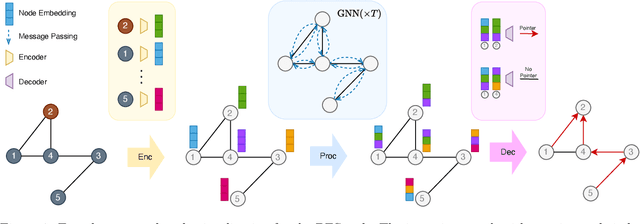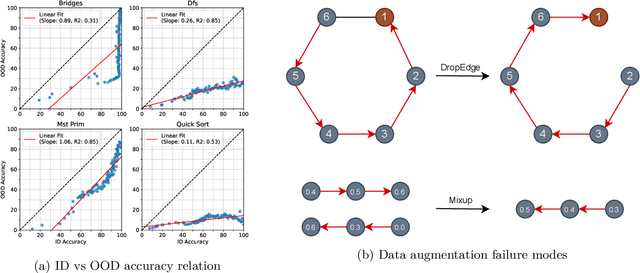Sadegh Mahdavi
Leveraging Online Olympiad-Level Math Problems for LLMs Training and Contamination-Resistant Evaluation
Jan 24, 2025Abstract:Advances in Large Language Models (LLMs) have sparked interest in their ability to solve Olympiad-level math problems. However, the training and evaluation of these models are constrained by the limited size and quality of available datasets, as creating large-scale data for such advanced problems requires extensive effort from human experts. In addition, current benchmarks are prone to contamination, leading to unreliable evaluations. In this paper, we present an automated pipeline that leverages the rich resources of the Art of Problem Solving (AoPS) forum, which predominantly features Olympiad-level problems and community-driven solutions. Using open-source LLMs, we develop a method to extract question-answer pairs from the forum, resulting in AoPS-Instruct, a dataset of more than 600,000 high-quality QA pairs. Our experiments demonstrate that fine-tuning LLMs on AoPS-Instruct improves their reasoning abilities across various benchmarks. Moreover, we build an automatic pipeline that introduces LiveAoPSBench, an evolving evaluation set with timestamps, derived from the latest forum data, providing a contamination-resistant benchmark for assessing LLM performance. Notably, we observe a significant decline in LLM performance over time, suggesting their success on older examples may stem from pre-training exposure rather than true reasoning ability. Our work presents a scalable approach to creating and maintaining large-scale, high-quality datasets for advanced math reasoning, offering valuable insights into the capabilities and limitations of LLMs in this domain. Our benchmark and code is available at https://github.com/DSL-Lab/aops
From Graph Diffusion to Graph Classification
Nov 26, 2024



Abstract:Generative models such as diffusion models have achieved remarkable success in state-of-the-art image and text tasks. Recently, score-based diffusion models have extended their success beyond image generation, showing competitive performance with discriminative methods in image {\em classification} tasks~\cite{zimmermann2021score}. However, their application to classification in the {\em graph} domain, which presents unique challenges such as complex topologies, remains underexplored. We show how graph diffusion models can be applied for graph classification. We find that to achieve competitive classification accuracy, score-based graph diffusion models should be trained with a novel training objective that is tailored to graph classification. In experiments with a sampling-based inference method, our discriminative training objective achieves state-of-the-art graph classification accuracy.
Leveraging Environment Interaction for Automated PDDL Generation and Planning with Large Language Models
Jul 17, 2024



Abstract:Large Language Models (LLMs) have shown remarkable performance in various natural language tasks, but they often struggle with planning problems that require structured reasoning. To address this limitation, the conversion of planning problems into the Planning Domain Definition Language (PDDL) has been proposed as a potential solution, enabling the use of automated planners. However, generating accurate PDDL files typically demands human inputs or correction, which can be time-consuming and costly. In this paper, we propose a novel approach that leverages LLMs and environment feedback to automatically generate PDDL domain and problem description files without the need for human intervention. Our method introduces an iterative refinement process that generates multiple problem PDDL candidates and progressively refines the domain PDDL based on feedback obtained from interacting with the environment. To guide the refinement process, we develop an Exploration Walk (EW) metric, which provides rich feedback signals for LLMs to update the PDDL file. We evaluate our approach on PDDL environments. We achieve an average task solve rate of 66% compared to a 29% solve rate by GPT-4's intrinsic planning with chain-of-thought prompting. Our work enables the automated modeling of planning environments using LLMs and environment feedback, eliminating the need for human intervention in the PDDL generation process and paving the way for more reliable LLM agents in challenging problems.
Memorization Capacity of Multi-Head Attention in Transformers
Jun 03, 2023Abstract:In this paper, we investigate the memorization capabilities of multi-head attention in Transformers, motivated by the central role attention plays in these models. Under a mild linear independence assumption on the input data, we present a theoretical analysis demonstrating that an $H$-head attention layer with a context size $n$, dimension $d$, and $O(Hd^2)$ parameters can memorize $O(Hn)$ examples. We conduct experiments that verify our assumptions on the image classification task using Vision Transformer. To validate our theoretical findings, we perform synthetic experiments and show a linear relationship between memorization capacity and the number of attention heads.
Towards Better Out-of-Distribution Generalization of Neural Algorithmic Reasoning Tasks
Nov 01, 2022



Abstract:In this paper, we study the OOD generalization of neural algorithmic reasoning tasks, where the goal is to learn an algorithm (e.g., sorting, breadth-first search, and depth-first search) from input-output pairs using deep neural networks. First, we argue that OOD generalization in this setting is significantly different than common OOD settings. For example, some phenomena in OOD generalization of image classifications such as \emph{accuracy on the line} are not observed here, and techniques such as data augmentation methods do not help as assumptions underlying many augmentation techniques are often violated. Second, we analyze the main challenges (e.g., input distribution shift, non-representative data generation, and uninformative validation metrics) of the current leading benchmark, i.e., CLRS \citep{deepmind2021clrs}, which contains 30 algorithmic reasoning tasks. We propose several solutions, including a simple-yet-effective fix to the input distribution shift and improved data generation. Finally, we propose an attention-based 2WL-graph neural network (GNN) processor which complements message-passing GNNs so their combination outperforms the state-of-the-art model by a 3% margin averaged over all algorithms. Our code is available at: \url{https://github.com/smahdavi4/clrs}.
 Add to Chrome
Add to Chrome Add to Firefox
Add to Firefox Add to Edge
Add to Edge